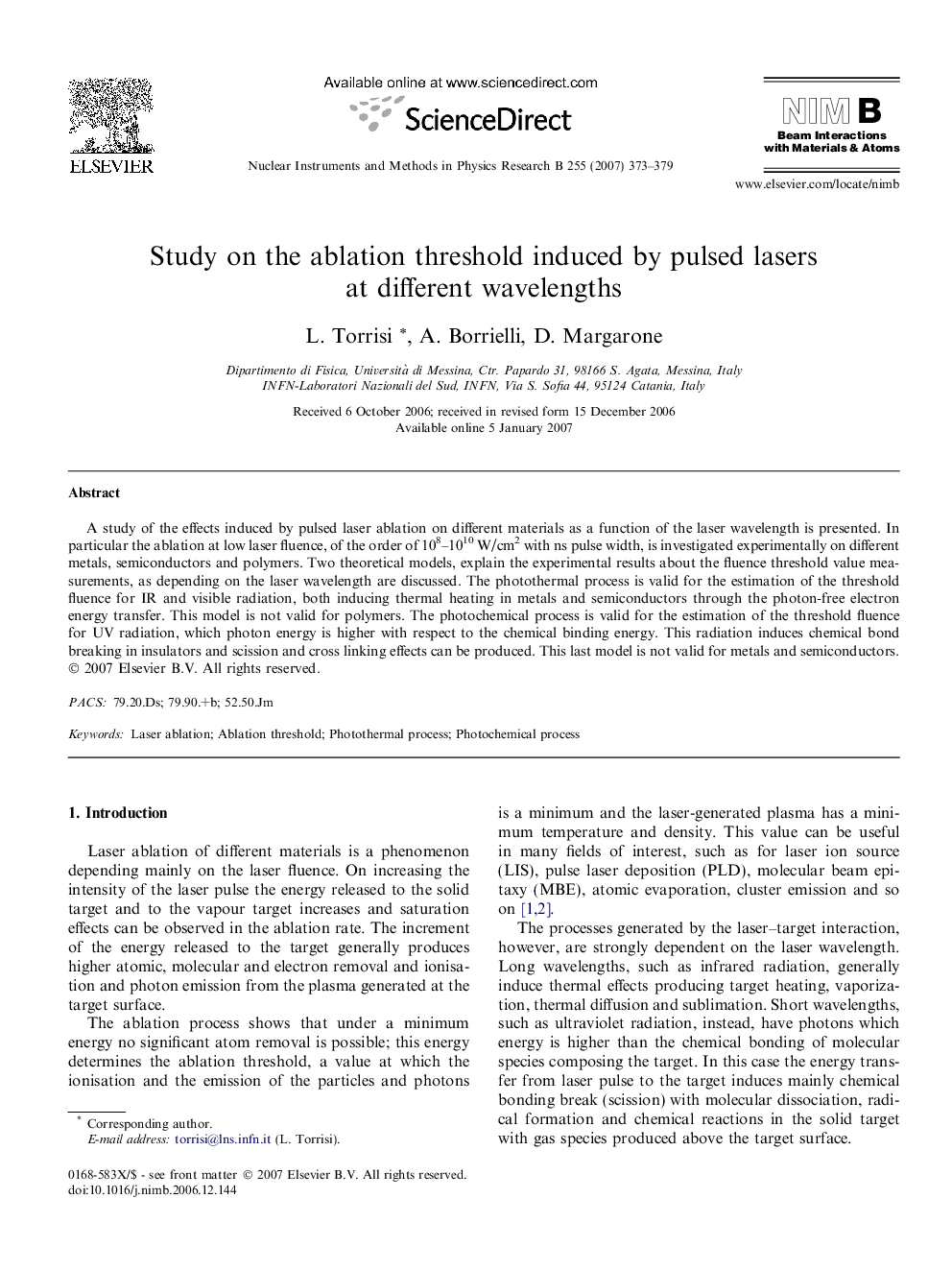| Article ID | Journal | Published Year | Pages | File Type |
|---|---|---|---|---|
| 1686744 | Nuclear Instruments and Methods in Physics Research Section B: Beam Interactions with Materials and Atoms | 2007 | 7 Pages |
A study of the effects induced by pulsed laser ablation on different materials as a function of the laser wavelength is presented. In particular the ablation at low laser fluence, of the order of 108–1010 W/cm2 with ns pulse width, is investigated experimentally on different metals, semiconductors and polymers. Two theoretical models, explain the experimental results about the fluence threshold value measurements, as depending on the laser wavelength are discussed. The photothermal process is valid for the estimation of the threshold fluence for IR and visible radiation, both inducing thermal heating in metals and semiconductors through the photon-free electron energy transfer. This model is not valid for polymers. The photochemical process is valid for the estimation of the threshold fluence for UV radiation, which photon energy is higher with respect to the chemical binding energy. This radiation induces chemical bond breaking in insulators and scission and cross linking effects can be produced. This last model is not valid for metals and semiconductors.
